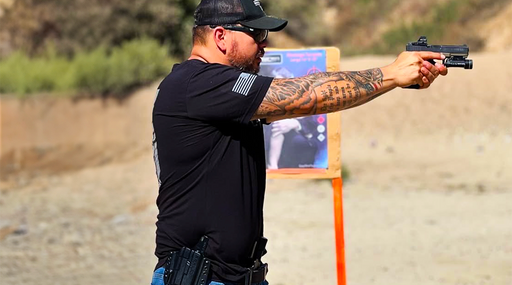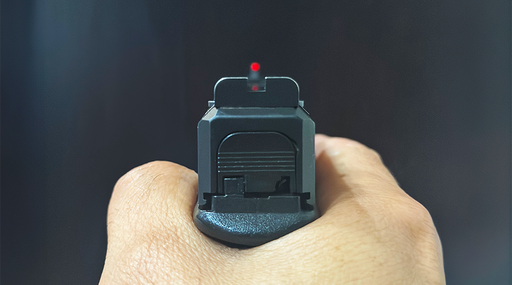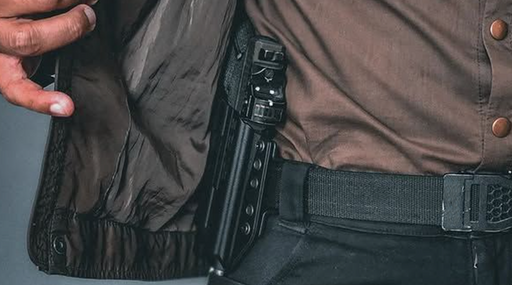Don't let the title put you off; this isn't about politics.
There’s a little topic that range instructors don’t discuss, but have all been frustrated by. Shooting, even at its most basic levels, requires a fairly complex set of fine motor activities. Regardless of the gun type, each hand has specific tasks to do. That’s all well and good, until someone doesn’t remember which hand is which based on the words “left” and “right.” In a group setting, moving right when the instructions said “left” is not only embarrassing, it’s a potential safety issue.
As a caring instructor who encounters people (I’ll admit, they’re mostly women) with this problem quite frequently, this is my attempt to make your next lesson more enjoyable and beneficial if the left/right struggle applies to you.
Not having an automatic association between your physical self and the words “left” and “right” is usually a minor inconvenience in modern daily life. But, lacking that connection can be costly in times of stress. And here’s the rub: you bought that handgun in order to have a chance to rescue yourself or loved ones in a time of maximum stress. Whether it’s taking directions from a bystander on how to escape a location, or getting every penny’s worth from your shooting lesson, “directional confusion” can be costly.
Do you remember anyone from our grandparents’ generation being confused about left/right? Me neither. You’re just as intelligent as they are or were. Their survival skills, and the skills of their grandparents before them, is part of why you’re here today! The quick association of these words with their respective body parts or directions is a survival skill. We owe it to ourselves and our loved ones to master. To not do so is, in this instructor’s estimation, lazy and childish. Even if you have learning challenges, you can master this and enjoy greater confidence and capability as a result.
If you’re someone who has no issue in a casual moment knowing left from right, but under stress it all goes haywire, welcome to a very large club! Here are some suggestions for taking control of directional confusion caused by stress. In this order:
Breathe. Take a nice deep breath. Focus your mind on hearing the directions. It’s easy to focus on your own stress, which almost always leads to verbal instruction sounding like a tossed salad of words. When that happens, anxiety takes over. Kick that anxiety into the back seat and strap it in like an unruly toddler! Take the wheel by focusing on the instruction. If there's a judgmental voice in your head saying something like, “oh no, I'm nervous again,” or “I just know I'm going to mess up,” consider it nothing more than a sign to put your attention where it belongs—in the here and now, focused on your interface with the gun and the instruction being given.
Ask for clarification and repeat the directions aloud. People who have the best experiences in training ask questions to be sure they understand the instruction before the exercise begins. Any good instructor would rather you ask in advance than guess and miss the point of the exercise. This is especially true during the current ammo shortage, when erring on a drill and having to repeat it can waste precious primers and powder.
Envision the exercise before doing it. It is well-established that seeing yourself going through an exercise in your mind's eye is often just as good as a live rehearsal. If time permits, take a moment to envision yourself doing each step. Most people use such imaginary exercises in the first person; feeling themselves draw the gun, seeing the sights, aligning them and placing them on target, and engaging the trigger. Other people might see themselves from a “fly on the wall” perspective, seeing themselves going through the motions of the drill with each movement done well.
Another way to envision is to simply watch the best shooter(s) if you're in a class that's shooting the same exercise in relays. Something about using a model for the actions you're about to do makes everything easier, at least for most people.
Use Mnemonics. Wait, use what? Mnemonics are just symbolic reminders that we use as mental shortcuts. For example, if I said “stop sign,” you'd immediately imagine a red hexagon. But if I said “hexagon,” your mind would likely need to take a moment to put together the image of a six-sided figure.
You might have something unique you can link with a particular side/direction. But here are some generic suggestions.:
“L is for Left.” Put your hands in front of you, fingers together and thumbs pointing to center. Which hand looks like an “L?” That's right, the left! Remember “L is for left,” and after a few reps you won't need to look at your hand to remember which way is which.
If you're in the right-handed majority, you write with your right hand. That's an easy one!
Rubber bracelets aren't hard to find. Consider a red one for the right wrist, or a lime-colored one for the left.
A shooting lesson will likely give you opportunities to utilize these mnemonic tools. I hope these suggestions will help some readers move up the shooting skills ladder with greater ease. If you're someone who overcame the left/right issue or a similar dilemma, please share in the comments how you made it happen. Enjoy your range time!
Eve Flanigan is a defensive shooting and concealed carry instructor living in the American Southwest. Today she works full time as an instructor and writer in the gun industry. Flanigan loves helping new and old shooters alike to develop the skills needed to keep themselves and their loved ones safe.





















Leave a comment